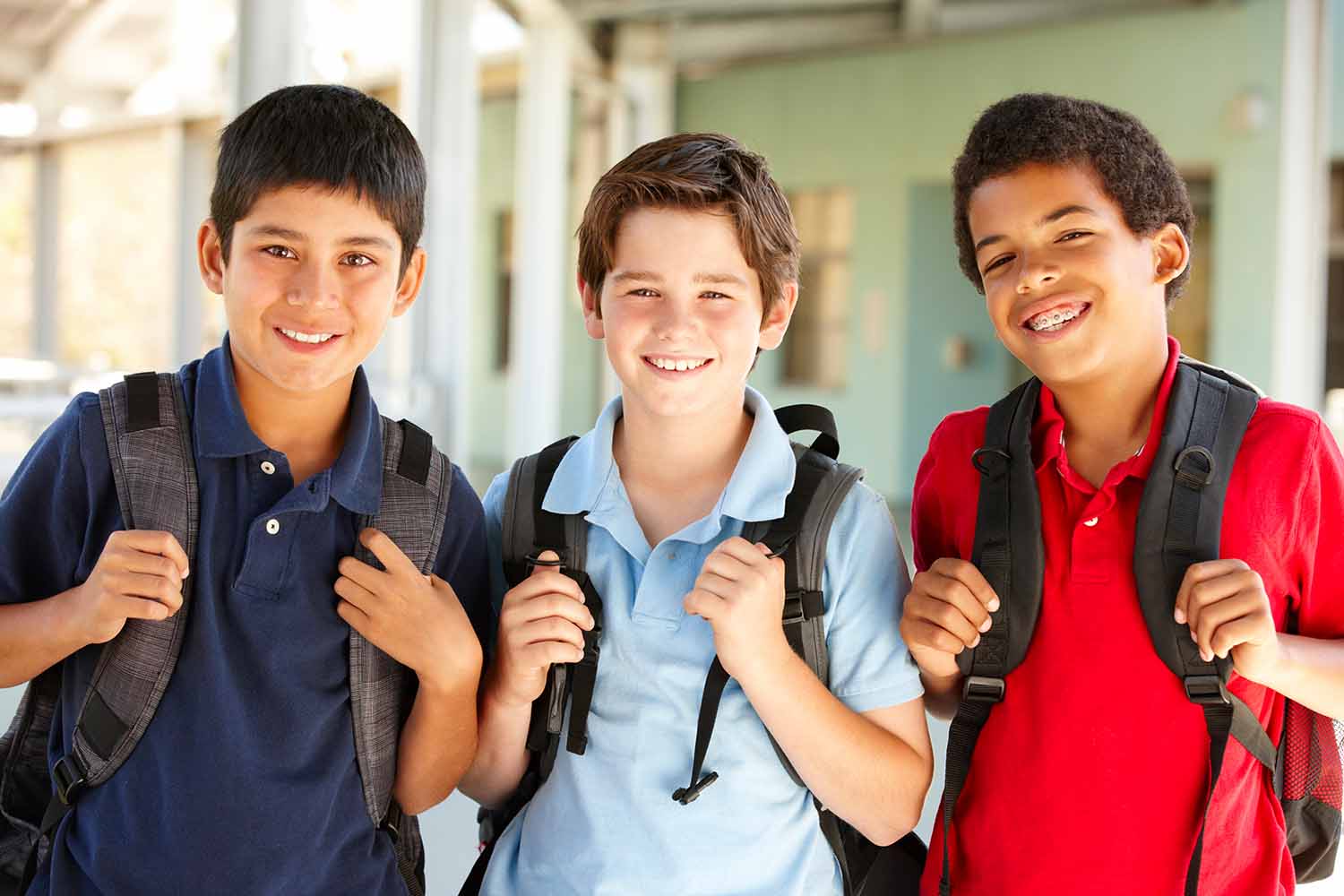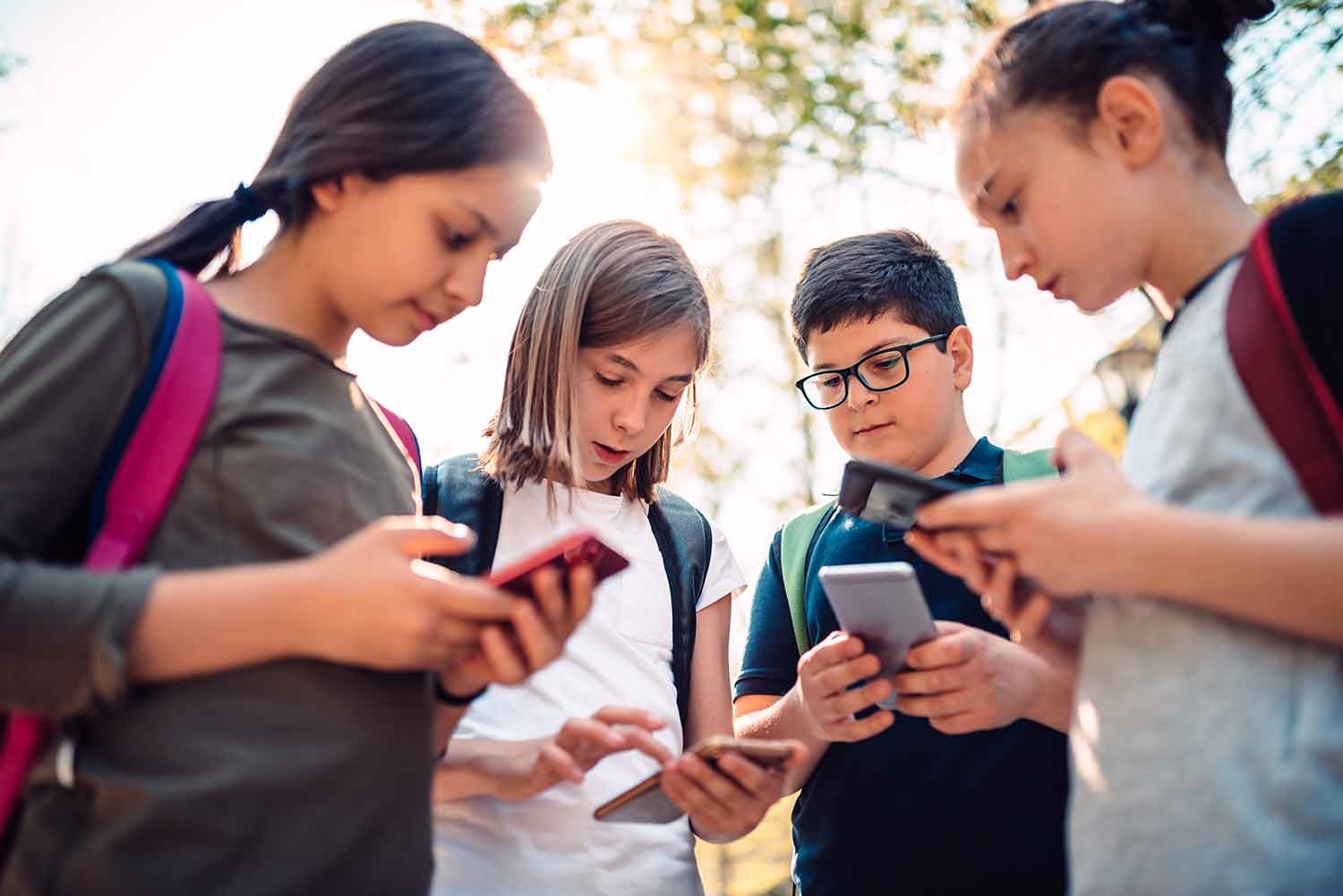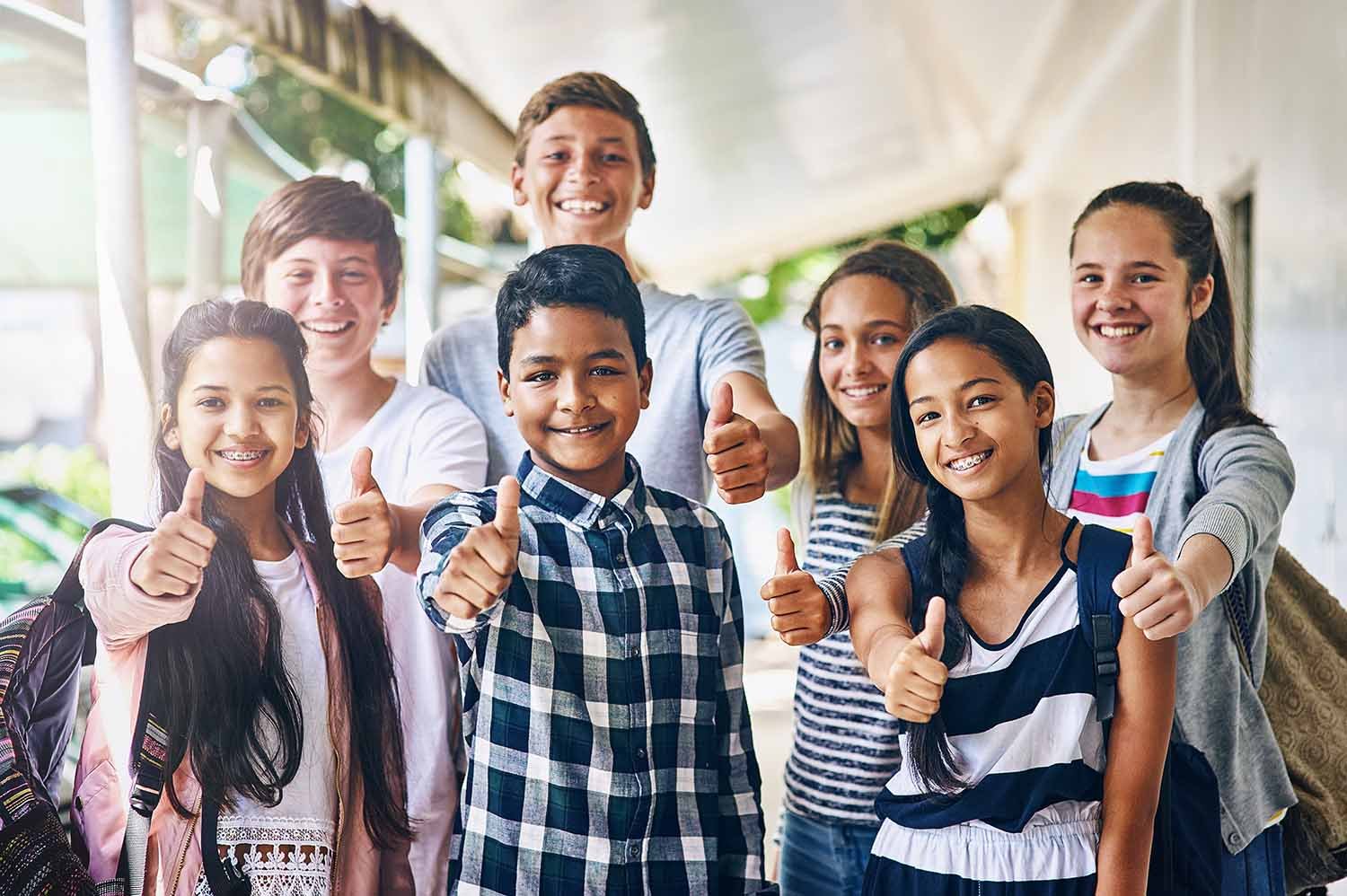Why SEL Is Essential to Help Today’s Students Succeed
Teaching is a rewarding, and sometimes frustrating, profession. Not only are teachers responsible for helping children succeed academically, but they also play an important role in helping their students develop the social and emotional skills they need to thrive throughout their lives.
In today’s world, social emotional learning (SEL) is the foundation for every other kind of learning. With research, we now know that SEL makes an enormous impact on learning and academic achievement, as well as long-term life outcomes, for our young people.
With SEL, teachers can more effectively keep students engaged, create a safe and collaborative learning environment, and help young people grow into caring, helpful adults who can succeed in their careers and relationships.
Here is our updated guide on why SEL is critical for today’s students, and how schools can effectively implement it.
What is Social-Emotional Learning or SEL?

Social emotional learning (SEL) is the process of learning how to manage emotions, achieve personal and community-wide goals, develop positive relationships, and make responsible decisions. While it’s an ongoing process for people at every stage of life, SEL is an especially important part of development for children and young adults.
Many schools teach SEL because it forms a foundation for classroom learning. Students cannot learn effectively when they are overwhelmed by difficult emotions or experiences that they don’t know how to cope with. When schools provide a strong SEL curriculum, students tend to have better educational outcomes.
One of the most popular frameworks for social emotional learning is developed by the Collaborative for Academic Social and Emotional Learning (CASEL), called the CASEL 5. Under the CASEL system, SEL is broken down into five broad, interrelated areas of competence:
- Self-awareness: The ability for a student to understand their own thoughts, emotions, and values; recognize their strengths and limitations; and understand what influences their behavior in different situations.
- Self-management: The ability for a student to manage their own thoughts, emotions, and behavior so they can achieve their goals and work effectively with others. This includes using strategies for stress management and self-discipline, taking initiative, and using planning and organization skills.
- Social awareness: The ability for a student to understand and empathize with others’ perspectives. Social awareness includes identifying social norms for behavior in different settings, demonstrating empathy and compassion for others, understanding social systems and organizations, and recognizing community resources.
- Relationship skills: The ability for a student to establish and maintain healthy relationships with peers, teachers, and other members of their community. This includes the capacity to communicate, actively listen, cooperate, negotiate conflict situations, work collaboratively, resist negative social pressure, and act as a leader when needed.
- Responsible decision-making: The ability for a student to make constructive decisions about how to behave across contexts, including making reasoned judgments, anticipating the consequences of decisions, and considering ethical and safety issues.
Each part of the CASEL 5 can apply to any development stage from early childhood to adulthood across a wide range of contexts. The CASEL system encourages educators to integrate SEL throughout the school’s academic curriculum, culture, and school-wide policies by collaborating with families and community organizations.
Why is Social-Emotional Learning Important?

SEL is key to helping people thrive in all stages of life. Children and teenagers are the most likely to benefit from SEL because it teaches them the skills they need to navigate conflict, manage difficult emotions, stay focused when they need to, develop and maintain positive relationships with their peers and teachers, and ultimately grow into caring adults who make a positive difference in their communities.
The benefits of SEL in schools
Research shows that in the short term, SEL improves academic achievement by an average of 11 percentile points. It also improves student attitudes toward school, reduces student stress and depression, and increases prosocial behaviors such as sharing and kindness.
Above all, SEL helps students and teachers alike create a sense of community in the classroom. Many SEL activities help students build more supportive relationships, which helps everyone feel safe and welcome in the learning environment.
Many educators believe that SEL can improve educational equity by addressing some forms of inequality. Students who do not have as many opportunities to learn SEL skills at home are the most likely to benefit from a meaningful curriculum in this area. Additionally, SEL can help create the conditions needed for schools to reexamine practices that may be inequitable so they can create a more inclusive, effective learning environment.
Other benefits of SEL in schools include:
- Better mental health for both students and teachers
- Fewer conduct or behavioral problems
- Stronger relationships
- Reduces bullying
- Improved attendance
- More engagement in learning
The lifelong benefits of SEL in schools

In the long term, SEL helps students develop into better members of their communities. Research shows that students who benefit from SEL in school are more likely to:
- Graduate from high school
- Have higher emotional well-being
- Be free from, or be able to cope with, mental health problems
- Succeed in their chosen careers
- Have positive relationships with family members and coworkers
- Avoid criminal and other risky behavior
- Be resilient against the effects of traumatic experiences
Studies have found that the benefits of teaching SEL skills continue far after students have left school. One large meta-analysis found that kids who received their last SEL lesson 3.5 earlier were still performing better academically than their peers who hadn’t received SEL. These same students were also less likely to deal with emotional problems, conduct issues, and drug use.
In fact, researchers have found that kids who go through SEL training continue to see benefits to their mental health up to 18 years later. One study also found that kids who had better SEL skills in kindergarten were much less likely to commit crimes, experience substance abuse, be on psychiatric medications, and be on public housing lists. They were more likely to have stable employment and graduate from high school on time.
It’s clear that SEL has significant benefits for our children both immediately and for the remainder of their lives.
Public Support for Social-Emotional Learning in Schools

Although there continue to be challenges and critics, SEL is becoming more and more widely accepted as an essential piece of our children’s education. Educators, parents, policymakers, and employers – as well as young people themselves – recognize the importance of developing not just academic skills, but also the social and emotional skills that are crucial for success in life. With this growing recognition, there has also been a surge of public support for SEL in schools.
Educators have been at the forefront of the SEL movement, advocating for the inclusion of social-emotional skills in the curriculum. Educators recognize that SEL is not just a “soft” skill, but a critical component of a well-rounded education. A recent RAND survey found that support for SEL in schools is widespread among most U.S. educators and administrators.
Young people themselves have also been strong advocates for SEL in schools. They recognize that academic success is not enough, and that developing social and emotional skills is important for their personal growth and well-being. On top of this, many young people are passionate about improving mental health for their generation – and they understand that SEL is a way to increase mental health resilience.
Employers have also expressed support for social-emotional learning in schools because they recognize the truth that today’s children will become tomorrow’s adults – and research shows that children who received SEL are more likely to have stable employment. In addition, employers today value employees who have not only technical skills, but also strong social and emotional skills such as communication, teamwork, and adaptability.
The broader public has also shown strong support for SEL in schools – despite what some critics claim. For example, in one recent poll, parents showed overwhelming support for their children receiving SEL training at school. This support cuts across political, geographic, and demographic lines, suggesting that there is a widespread recognition of the importance of SEL in education.
Social-Emotional Learning in the Post-Pandemic Era

After the pandemic hit, schools across the country switched to remote learning with virtually no time for teachers, students, or families to prepare. As a result, many students lost out on learning — especially in SEL areas. Even in schools that have gone back to in-person classes, many students are struggling because their learning environments are not as optimized for SEL as they may have been in 2019.
The youngest students may have an especially hard time with social and emotional skills at this difficult time. These students haven’t had much practice with focusing in a busy classroom, communicating in person, and collaborating with peers. Teachers may need to focus on basic self-management, social awareness, and relationship skills that normally would be taught a grade or two earlier before students are ready to learn other things.
Meanwhile, older students also haven’t had as many opportunities to build relationships with their peers or practice teamwork, leadership, and other skills through traditional afterschool activities.
What’s more, many students are understandably struggling with their mental health. Initial research has shown that the pandemic has had a negative effect on all of our mental health — including children. Several medical groups have declared a nationwide childhood mental health crisis. Last year, emergency room visits for mental health crises increased by 24% for children aged 5 to 11, and over 30% for teens Suicide attempts for teen girls increased by a whopping 50%.
This crisis comes as no surprise. During the pandemic, children have been faced with countless emotional difficulties, from losing loved ones to being in social isolation.
For students who have been negatively impacted by reduced or changed learning opportunities during the pandemic, SEL is more important than ever. Schools will need to make SEL a top priority to help students recover from the trauma of the past year and thrive in every area of life.
How to Implement SEL in K-12 Schools

There are many ways to implement SEL in your school. Many educators choose a combination of methods to help students learn and practice key social and emotional skills, including direct teaching, having teachers model behavior, intervening strategically in student conflicts, and providing students with time to set goals or reflect on their behavior.
Here are a few strategies you can use in your school or classroom:
Teaching explicit Social-Emotional Learning lessons
Many school districts train teachers to explicitly teach SEL skills. For instance, a middle school might have teachers show students how to set SMART goals or provide a presentation about how to deal with conflict during homeroom.
Providing opportunities to practice SEL skills during assignments
Teachers often assign group projects not only to help students learn the class subject matter, but also to give them opportunities to practice their interpersonal communication, planning, and collaboration skills. Similarly, a teacher may assign a journaling activity that involves self-reflection so students can develop their self-awareness skills as they practice writing.
Taking advantage of teachable moments
On any given day, there may be at least one student struggling with a particular SEL skill. For example, two students may get into a loud argument or struggle to agree on the rules of a game at recess. When teachers see these types of situations, they can intervene and suggest ways for students to problem-solve or come to a resolution. Teachers should always remember not to publicly shame students in the name of a teachable moment. Whenever possible, give feedback directly and privately.
Modeling Social-Emotional Learning skills on a daily basis
One of the best ways to help young people learn is to model the behavior you wish to teach them. For example, if a teacher wants to help students learn to plan and set goals, they could write today’s teaching goal on the whiteboard at the beginning of class. They can also help students model good behavior for each other by pointing out when their peers act with kindness.
Organizing school-wide social activities
Extra-curricular activities like field day, ice cream socials, sports, and after-school activities aren’t just for fun. These activities provide opportunities to build community and help students practice social skills. Many successful adults today credit sports and other school-related social activities with teaching them things like self-discipline, team-building, decision-making, and the value of hard work — key skills they’ve used to excel in other areas of life.
Providing mindfulness practice
Mindfulness is an effective practice for many desirable social and emotional outcomes. Mindfulness helps students cope with stress, learn to recognize their emotions, and regain their focus so they can learn more effectively.
Calm Classroom’s mindfulness curriculum has been shown to lead to a 23% decrease in misconduct. 74% of teachers report that students are more focused and ready to learn after using exercises from the curriculum. What’s more, 71% of teachers who use Calm Classroom say they themselves use the techniques outside of school to manage stress and emotions.
For more information about implementing SEL and mindfulness in your classroom, check out our blog or sign up for a free 2-week trial of our SEL-friendly school mindfulness curriculum.





SIGN UP FOR OUR NEWSLETTER